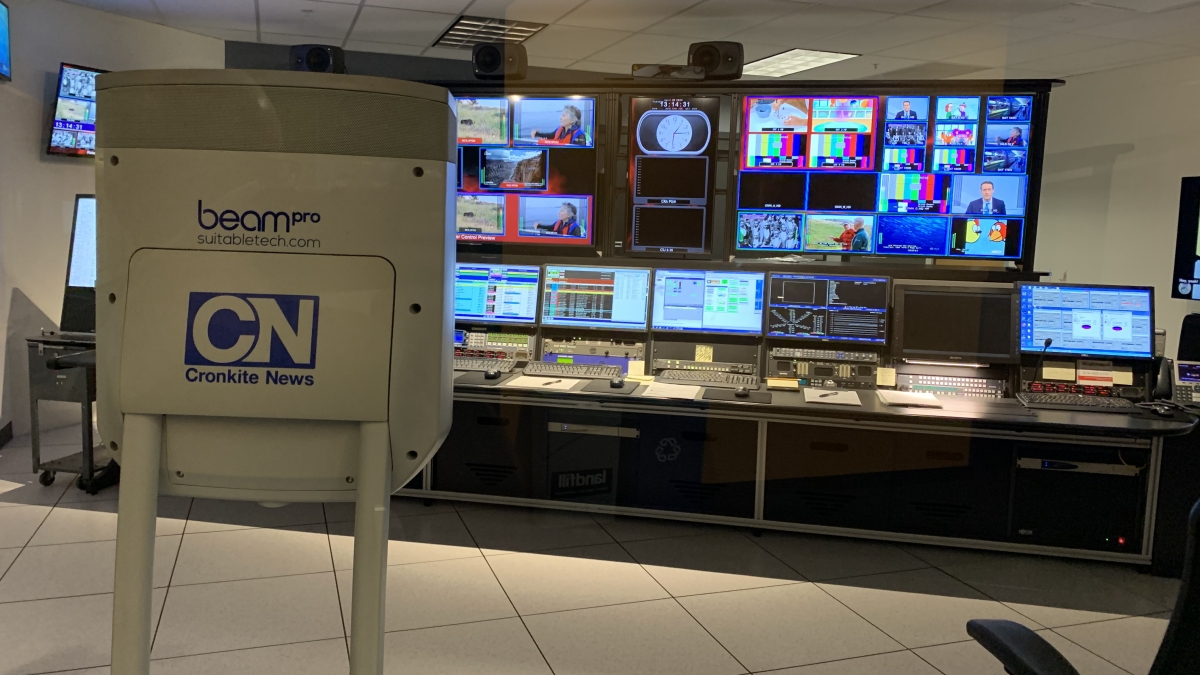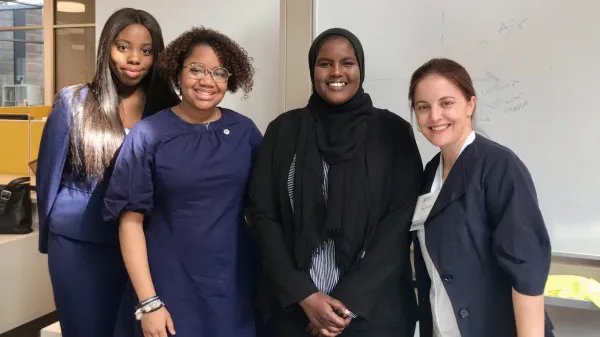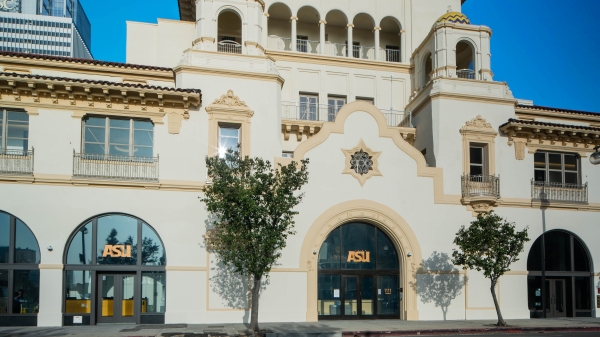Arizona PBS gets help from telepresence robot
A 5-foot tall robot is helping keep Arizona PBS on the air

Scotty has been essential to keeping PBS operations running smoothly during the pandemic.
For the past month, as the COVID-19 pandemic sent most Arizona State University staff home to work, a telepresence robot nicknamed Scotty has been key to keeping the public television station up and running.
On most days, Scotty roams the nearly empty fifth floor of the Walter Cronkite School of Journalism and Mass Communication on the Downtown Phoenix campus, where the Arizona PBS control rooms, studios and offices are located.
The robot scoots into the broadcast control center, pausing before rows of television monitors, and then ducks into another room stacked to the ceiling with servers. A broadcast engineer, operating Scotty’s controls from home, monitors how equipment is functioning and troubleshoots if needed.
The Beam robot, made by Suitable Technologies, looks like it was built by stacking an iPad on stilts and mounting the whole thing on a hover board. Equipped with two cameras, speakers and a microphone, it is the next best thing to having a person on site, said Ian MacSpadden, chief technology officer for Cronkite and Arizona PBS.
“A broadcast engineer sitting at home can see and hear everything the robot sees and hears,” McSpadden said. “Otherwise, the teams would have to rely only on the messages of remote computers, which can be vague and not tell the whole story.”
When an on-call engineer receives an alert message from a station system, for example, he or she can log in to Scotty and drive the robot to the problem area for a visual inspection.
“This helps more accurately diagnose an issue and can often save a trip into the station,” McSpadden said.
In addition to providing viewers with news and entertainment programming, it’s important to keep the station on the air because it’s part of the emergency alert and WARN safety systems that help keep families apprised during emergencies, he said.
As helpful as Scotty is, there are some things he’s not equipped to do. One engineer needs to be in the building to operate master control, organizing and playing back all programs seen across the station’s five channels. A second person, a production specialist, puts together segments for the station’s two news shows: “Arizona Horizon,” the daily public affairs program; and the national news program “PBS NewsHour,” which has a western bureau housed in the Cronkite building. Everything else, including taping and editing, is being done from homes.
Before the COVID-19 outbreak, Scotty was used for remote interviews, building tours and to bring speakers into classes, said Senior Associate Dean Kristin Gilger, who has utilized Scotty to beam in speakers to her classes and to show students in one part of the building what’s going on in another.
She said the idea to bring Scotty to the school came from Innovations Chief Eric Newton, who would sometimes show up at Cronkite meetings via the robot. “Eric would roll into a room, his face filling the screen, and start talking,” she said. “That always drew some double-takes.”
Newton, who nicknamed the robot Scotty in honor of the character on “Star Trek,” said he has always known there are many possible uses for Scotty, but he did not anticipate an epidemic. “The current use is not something we imagined,” he said.
MacSpadden said the robot is working out exactly as hoped, and there is an added benefit — people who are working at home can easily interact with those in the building. “It’s almost like they’re both in the same room,” he said.
The interaction, said broadcast operations supervisor Donald Rump, “is very strange but, at the same time, it’s very interesting.”
Rump said he hopes Scotty can stick around when the health crisis ends and people return to the building in full force. He thinks the robot could be used on holidays and weekends, allowing staff to monitor systems from home.
“It’d be very helpful if we had him or something like that to use in the future,” he said.
Cronkite student Kenzel Williams contributed to this report.
More Law, journalism and politics

School of Politics and Global Studies director's new book explores mass violence
Why do people commit atrocities and why are certain groups, including religious and ethnic, more vulnerable to large-scale…

ASU faculty contributing to improvement of Wikipedia
Many academics have a love-hate relationship with Wikipedia. While the website has information about almost anything you can…

ASU Law students gain vital experience through Los Angeles location
Students at the Sandra Day O’Connor College of Law at Arizona State University may be concentrated in the school’s downtown…